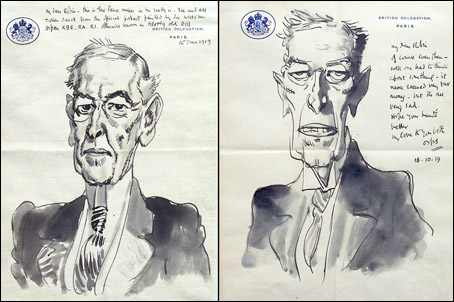“The Peace maker as he really is”
In 1919, shortly after the end of the First World War, President Woodrow Wilson traveled to France to participate in the Paris Peace Conference. Here he helped decide the fate of Germany and her allies and oversaw the creation of the League of Nations (now the United Nations). He also had his portrait painted by the Irish artist Sir William Orpen, one of Britain’s official war painters who, in addition to depicting life in the trenches, painted over one hundred portraits of politicians and military commanders.
Most of Orpen's World War I portraits are now at the Imperial War Museum in London. His portrait of Wilson hangs in the White House. However, Orpen is known to have made several informal pen-and-ink sketches of his paintings, which he inscribed and sent to friends. Two of these were recently discovered among a collection of uncataloged materials at the LSU Libraries’ Special Collections.
One is based on the White House’s official portrait of Wilson and was sent by Orpen to his friend Robin Legge, music critic for the London Daily Telegraph. “My dear Robin," Orpen wrote at the top of the drawing, "this is The Peace maker as he really is -- tie and all, taken direct from the official portrait by Sir William Orpen KBE, RA, RI, otherwise known as Bloody Old Bill.”
Many of those who attended the peace conference regarded Wilson, an academic and a former college president, as cold and aloof. A second sketch by Orpen, apparently an off-hand caricature not based on a more formal portrait, captures Wilson’s air of detachment. Signed “Orps” (Sir William’s nickname), it too was sent to Robin Legge in 1919 from the offices of the British Delegation in Paris.
These materials are cataloged as William Orpen Drawings (Mss. 5013), location MISC: O.

